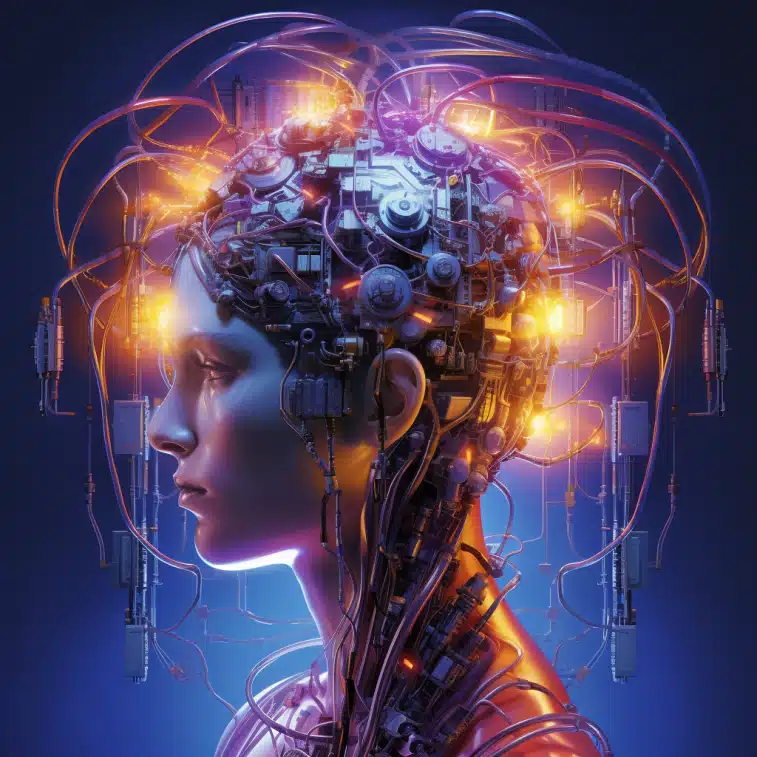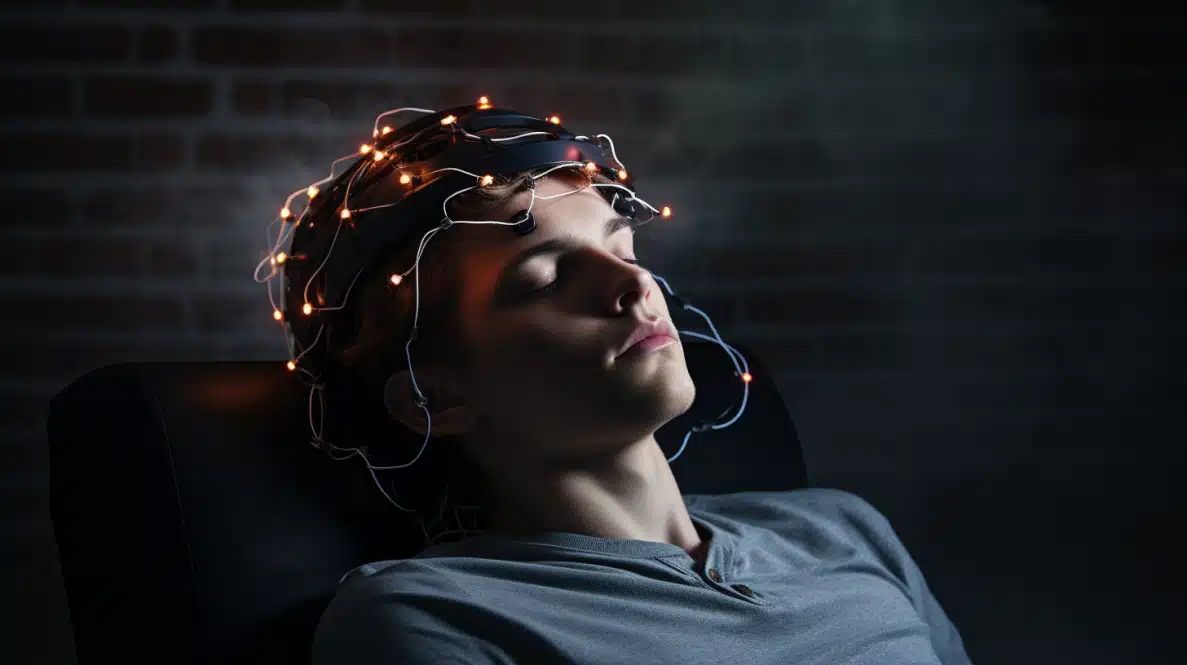An innovative study aims to assess the feasibility of patients self-managing transcranial direct current stimulation (tDCS) therapy for depression at home.
This digitally-supported model could greatly expand access if proven safe, reliable and effective.
Key Facts:
- tDCS uses scalp electrodes to deliver targeted electrical currents modulating brain activity
- Applied to prefrontal cortex, tDCS can have antidepressant effects in many patients
- This randomized controlled trial will evaluate self-applied tDCS for depression at home utilizing tele-monitored devices
- Goals include assessing tolerability, adherence, appropriate dosing, symptom improvements
- Eventual efficacy could support radical new frameworks for decentralized patient-centered neurostimulation
Source: Pilot Feasibility Stud. (2023)
Understanding Transcranial Direct Current Brain Stimulation (tDCS)
Transcranial direct current stimulation, or tDCS, involves placing electrodes on the scalp to deliver weak constant electrical currents to the cerebral cortex.
This modulates excitability and activity patterns in the regions stimulated based on polarity – anodal increases, cathodal decreases activation.
Lasting effects depend on dosage parameters like current strength and duration.
Safety wise, tDCS is very well-tolerated compared to alternatives. Mild side effects occasionally include temporary tingling, itching or skin redness under the electrodes.
Devices are emerging allowing precise tDCS administration under medical guidance in both controlled clinics and potentially now at patient homes as well.
Rationale for TDCS Therapy Targeting Prefrontal Cortex to Treat Depression
In major depressive disorder (MDD), complex disruptions of neural activity in frontolimbic networks drive symptoms like low mood, cognitive dysfunction and anhedonia.
Research shows applying tDCS targeting left dorsolateral prefrontal cortex can rebalance activation patterns in these pathways.
Cathodal stimulation decreasing right dorsolateral prefrontal activity may also help achieve antidepressant effects.
The method’s potential first emerged in 2008 with a key randomized controlled trial.
In that study, over 40% of MDD patients achieved remission after six weeks when receiving prefrontal tDCS versus under 10% provided sham treatment.
Numerous trials since found similar success.
While mechanisms remain incompletely understood, tDCS applied daily is believed to cumulatively strengthen or weaken connections in neural circuits related to mood and cognition through lasting impacts on synaptic plasticity.
Downstream effects modulating neurotransmitters like serotonin, dopamine and GABA likely also play a key role.
Potential Advantages of At-Home TDCS Depression Treatment
Transitioning tDCS delivery for MDD away from specialist clinics into patients’ homes supervised remotely offers numerous potential upsides:
Greater Accessibility
- Saves significant travel time and transportation needs
- Flexible scheduling improves adherence suiting individuals’ routines
- Still accessible during staff shortages disrupting clinic operations
- Reachable when living far from urban treatment centers
Enhanced Privacy and Comfort
- Avoids stigma some feel visiting psychiatric facilities
- Private home settings can reduce anxiety
- Comfort of self-managing care on patient-directed terms
Improved Consistency
- Self-motivation and autonomy may increase likelihood of completing prescribed sessions
- Feasibility of lengthier treatment courses over months before tapering
Increased Scalability
- Drastically reduces demands on staff time to deliver stimulation
- Lower costs anticipating eventual adoption could enable reaching exponentially more patients globally by scaling capacity
Overcoming Challenges for At-Home TDCS Through Innovations

Delivering non-invasive brain stimulation outside controlled in-clinic settings poses substantial technical and procedural demands.
Success hinges on ensuring appropriate dose intensities are precisely delivered each session and monitoring for any safety issues arises.
This trial implements advances like custom positioning caps and cloud-connected devices to help participants self-manage stimulation.
Researchers emphasize solutions promoting ease of use facilitating adoption.
Optimized Electrode Placement
Precisely targeting intended cortical regions is imperative yet challenging relying on patients’ placement.
To enhance accuracy and consistency, developers created five sizes of specialized electrode caps with built-in slots securing stimulating sponges on the scalp.
During baseline visits, staff select each participant’s optimally fitting cap based on head measurements.
Saline-soaked sponges are then injected into the left/right prefrontal slots before every session.
This improves localization precision and minimizes placement variability.
Cloud-Based Monitoring Systems
Sophisticated telemetry systems record then transmit detailed neurostimulation parameters to cloud servers enabling staff remote oversight.
Settings captured each session here include:
- Contact quality metrics (impedances)
- Current intensity waveforms
- Exact start and stop times
- Subject comfort questionnaires
Researchers scrutinizing this data can identify issues like unstable headset connections needing adjustment or react if side effects arise.
Participants also receive reminders and troubleshooting guides automatically through integrated tablet apps.
Study Protocol: Prospective Trial of Remotely-Supervised Home TDCS for Depression
Leveraging innovations supporting at-home tDCS delivery, this rigorous clinical trial will evaluate a framework enabling patients to self-manage daily prefrontal stimulation sessions over 6 weeks.
Trial Design
- Randomized, double-blind, sham-controlled
- 32 patients with MDD receive active or placebo tDCS
- 6 week treatment phase: 30 minutes tDCS daily, 5 days/week
Intervention Details
- 2 milliamps tDCS targeting left/right dorsolateral prefrontal cortex
- Cloud-connected neurostimulators record/transmit session metrics
- Tablet software enables reminders/logs/staff communication
- Custom electrode caps provide consistent scalp placement
Assessments
- Feasibility based on session completion rates and dropout percentages
- Safety monitoring includes reported side effects like pain/headache
- Exploratory outcomes include standard depression rating scale score changes
Significance
Rigorously evaluating innovative frameworks designed to overcome barriers for at-home tDCS will determine if sufficient treatment fidelity is possible allowing self-management with appropriate medical oversight.
Envisioning At-Home TDCS For Depression Done Right
Looking beyond this particular trial, if efficacy for hard to treat psychiatric disorders is eventually established, optimized models of digitally-supported home-based neurostimulation could transform delivery improving lives for millions struggling with depression.
The essential elements enabling appropriate rigor include:
- Intuitive user-centered electrode positioning strategies
- Responsive clouD-driven analytics tracking individual dosing
- Remote practitioner guidance empowering patient self-management
- Iterative technology refining targeting, efficacy and side effect profiles
With rigorous evidence substantiating therapeutic benefit, radically patient-centered decentralization of neurostimulation administration could one day become clinical reality.
But any at-home medical therapy reliant on daily self-application demands demonstrating safety along with positive impacts on patients’ wellbeing substantially outweighing burdens before earning endorsement.
Progress implementing responsible innovation is encouraging yet early still on the long road ahead.
References







